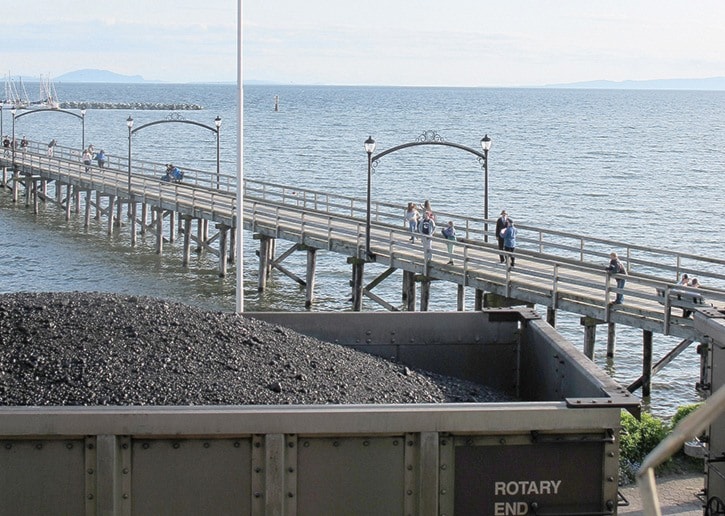An environmental-impact assessment on Fraser Surrey Docks’ proposed direct-transfer coal facility offers nothing to ease concerns in White Rock, a report by the city’s director of engineering states.
As a result, Greg St. Louis is recommending council ask for trackside air-quality monitoring in White Rock and modelling of the exposure to coal dust and particulate from the border to FSD be done prior to any decision on the proposed facility.
“The EIA does not provide any useful information on the environmental impacts of transporting coal through the City of White Rock,” St. Louis concludes.
“It specifically excludes all rail transportation from the coal mine to FSD. However, based on the number of train movements projected to pass through White Rock there will be an increase in diesel emissions from locomotives and coal dust. Since the EIA failed to look at this, there is not enough information provided to determine the extent of potential health impact to the residents.”
Council was to consider St. Louis’s recommendations – which include authorizing the mayor to write Port Metro Vancouver outlining the city’s continued concerns with the project – Monday night, after Peace Arch News’ press deadline.
They were also to hear from FSD president and chief executive officer Jeff Scott.
The port has final say on FSD’s application to build a $15-million direct-transfer coal facility at 11060 Elevator Rd., and officials have indicated a decision could come soon after tomorrow's deadline for public comments.
If the facility is approved, it would handle two million metric tonnes of coal in its first year of operation. According to St. Louis’s report, that will grow to four million tonnes annually thereafter – increasing the potential volume of trains travelling through White Rock to 320 in year one and 640 after that. Each train would be approximately 7,000 feet long, and consist of 125-135 cars plus four engines, he adds.
While the port-ordered EIA concluded the terminal won’t harm human health or the environment, St. Louis notes data cited regarding coal dust and particulate is outdated and does not consider the trains’ proximity to pedestrians on the city’s promenade.
Concerns with diesel emissions, increased train noise and vibration and the potential impact to environment also remain.
“The report does not address the immediate concerns of the residents of the City of White Rock,” St. Louis writes.
Last month, the Lower Mainland’s chief medical health officers also denounced the findings as inadequate.
Drs. Patricia Daly and Paul Van Buynder said concerns include a reliance on dated studies, and a focus on impacts near the terminal area rather than the BNSF rail corridor.
